The Miracle (1912) (Germany: Das Mirakel, France: Le Miracle), is a British silent full-colour film, using a hand-coloured process similar to Pathéchrome. Produced by Joseph Menchen and directed by Michel Carré, it is among the very first full-colour feature films to be made. It stars Maria Carmi, Ernst Matray, Florence Winston and Douglas Payne, and was filmed on location in Austria.
| The Miracle | |
|---|---|
Scene from the Lyricscope play of The Miracle with Florence Winston, Ernst Matray and Ernst Benzinger | |
| Directed by | Michel Antoine Carré (film) Max Reinhardt (play) |
| Produced by | Joseph Menchen |
| Written by | Karl Vollmöller (play and film) |
| Starring | Maria Carmi Ernst Matray Florence Winston Joseph Klein |
| Music by | Engelbert Humperdinck (play and film) |
| Distributed by | Joseph Menchen (UK) |
Release date |
|
Running time | 7,000 feet (UK) |
| Country | UK (American producer with main production office in London, French co-director, filmed in Austria, coloured in France, international cast) |
| Language | Silent film with intertitles |
| Budget | $50,000 |
The Miracle was not intended to be shown as an ordinary film in the usual way, but was designed by Menchen to be shown as part of a 'Lyricscope play'. This was an unusual (if not unprecedented) spectacular theatrical presentation which – in its most elaborate and complete expression – included: the projected colour film; a full-sized symphony orchestra and chorus performing Engelbert Humperdinck's score; live sound effects such as church bells and crowd noises; stage sets around the projection screen which changed during the performance; and live (non-speaking) actors and dancers in medieval costume. The various component parts of this ideal production varied somewhat according to local conditions.
This 1912 multi-media experience was an adaptation of Max Reinhardt's wordless spectacular stage production of Karl Vollmoeller's play of the same name, which had played to huge audiences at the Olympia, London exhibition hall in 1911–1912. As some contemporary critics realised, The Miracle was not a "moving picture drama" in the normal sense of the word, but a "filmed pantomime," a celluloid record of the action of the stage production in a unique presentation.
The world première of the full-colour 'Lyricscope play' of The Miracle took place at the Royal Opera House, Covent Garden, London, on 21 December 1912 and it was shown all over the country until Easter 1913, breaking many records for attendance. The colour film with its attendant show subsequently made its way around the world, being shown in the USA, Australia and Germany.
A rival, unauthorised version (Das Mirakel) directed by Mime Misu for Continental-Kunstfilm in Germany appeared in the same year with the same subject and English title ("The Miracle"), and was the subject of various copyright legal actions in the UK and the USA, resulting in seven different titles shared between the two films.
Screenplay
The film tells the story of a wayward nun, Megildis, who deserts her convent with a knight, influenced by the music of an evil minstrel. A statue of the Virgin Mary comes to life and takes place of Megildis, who makes her way through the world and its many vicissitudes. Later, Megildis returns to the convent with her dying infant, and is forgiven as the statue resumes its place.
Act 1 – Temptation
- Scene 1: The Nun, Sister Megildis is placed in charge of the sacred image.
- Scene 2: The healing of the lame man.
- Scene 3: The Minstrel and the music.
- Scene 4: The arrival of the Knight.
- Scene 5: The Nun must spend the night kneeling.
- Scene 6: The flight of the Nun with the Knight.
- Scene 7: The Miraculous Image comes to life.
Intermezzo
- Episode 1: The lake of the fairies.
- Episode 2: The capture of the Robber Count, and dancing for the Nun.
- Episode 3: The mock marriage ceremony.
- Episode 4: The Nun is arrested for witchcraft
- Episode 5: The Nun is shown the ghosts of all who have lost their lives because of her.
Act 2 – Forgiveness
- Scene 1: Christmas Eve in the Convent.
- Scene 2: The image of the Virgin returns to its altar.
- Scene 3: Megildis returns to the convent with her babe, and finds it dead. The Miracle occurs.
- Scene 4: Forgiveness.
- Maria Carmi – The Madonna
- Florence Winston – The Nun, Megildis
- Ernst Matray – The Minstrel (or the Player)
- Douglas Payne – The Knight
- Ernst Benzinger – The Robber Count
- Joseph Klein – The King
- Theodore Rocholl – The King's Son
- Agathe Barcesque – The Abbess
- Marie von Radgy – The Old Sacristan
- Alfred König – The Lame Man
All the actors in the film (except Florence Winston) had just given sixteen stage performances of the play in Vienna during the two weeks immediately preceding shooting, and were well-rehearsed in their parts.
Although some advertising for the film implied that all the cast had been in the 1911-12 Olympia production, this was only true for Maria Carmi, Douglas Payne, Ernst Benzinger and Joseph Klein. Carmi was married to Karl Vollmoeller, the author of the stage play, and The Miracle was the first of her 26 films. Apart from Payne and Matray, who had made one film each, none of the cast had any experience in film acting; between them Carmi, Matray, Payne, Benzinger and Klein went on to make some 160 motion pictures Carmi, Matray, Klein and Rocholl also starred in the film of Vollmoeller's next pantomime, Eine venezianische Nacht (A night in Venice).
The miraculous legend of a wayward nun named Beatrice has been retold many times since it was first collected in the early 13th century by Caesarius of Heisterbach in his Dialogus miraculorum (1219–1223). The tale was revived by Maurice Maeterlinck in 1901 in a minor play named Soeur Beatrice (Sister Beatrice), drawing on versions by Villiers de l'Isle-Adam and on the 14th-century Dutch poem Beatrijs. Maeterlinck described his own work (and Ariane et Barbe-bleue) as "...little scenarios, short poems of the type unfortunately called 'opera-comique', destined to furnish the musicians who asked for them, a theme amenable to lyrical developments. They pretend to nothing further." According to one critic, however, Ariane et Barbe-bleue and Soeur Beatrice "are, in truth, absolutely devoid of serious effort, aesthetic, doctrinal, or moral."
Sister Beatrice was produced by Vsevolod Meyerhold at the Moscow Arts Theatre in 1906, a production which Reinhardt may possibly have been aware of. Maeterlinck's play was also produced in March 1910 at the New Theatre, New York, with Edith Wynne Matthison in the title part.
While recovering from an illness aged 18 in 1896, Karl Vollmoeller had a vision of the Blessed Virgin Mary which had a profound impression on him, and which later became the basis of his wordless play, The Miracle. In a later interview he recounted: "While living in Italy, I had the chance to become absorbed in Latin manuscripts which told the history of the saints of the Catholic Church. (ie Heisterbach). One of these legends inspired me to write my play known as The Miracle... I wrote this piece (play) all at the same time (in one go), before films were made. I wish to state most emphatically that my play contains a spiritual message for the whole world, not only for Christians."
In another interview in 1913, Vollmoeller said of The Miracle: "The Miracle is not a theatre play in the ordinary sense. It is intended as an appeal to religious feeling. To attempt to cater in a play of this sort exclusively to the rich or the snobbish would be a great mistake. Often the people who would appreciate a play are the people who cannot afford the price of admission. For a production like The Miracle to coach the people for whom it was primarily intended it must have a low price of admission."
The film The Miracle seems to have been the brainchild of its producer, Joseph Menchen, a London-based American inventor, film projectionist and owner of a New York theatrical lighting business who later became a literary agent for film scripts. Reports of copyright cases in the English and US courts confirm that Menchen made the film, and a review of the film's US première in New York referred to it as "the Menchen Miracle".
Menchen obtained the sole rights and film rights from Reinhardt and from Bote & Bock (Vollmöller's and Humperdinck's publishers), and had "gone to very considerable expense" (£20,000 or $50,000) "in preparing a film of the play, which he intended to produce with Mr. Walter Hyman" at the Covent Garden Opera House on December 21." Another name (possibly a financial backer) appearing in connection with the production is that of A. D. Rosenthal. The 'Lyricscope play' was designed to be a partial re-creation (on a slightly smaller scale) of Reinhardt's massive theatrical spectacle which had drawn such large crowds to Olympia the previous year.
Reinhardt seems to have been involved in some initial technical discussions about a film of The Miracle (according to a July 1912 article in The Cinema before the film had been made) although he seems to have had little to do with its actual making.
Although much of the 'direction' belongs essentially to Reinhardt (since the movie was intended to be a recording on film of Reinhardt's stage production), Menchen engaged the experienced French film director Michel Carré to supervise the filming. Carré had recently completed a historical film about Napoleon Bonaparte, Le Memorial de Saint-Hélène (1911). He had previously directed the first European full-length (90 minutes) film, L'enfant prodigue (1907), based on his own earlier pantomime with music (Carré 1890); and with Albert Cappellani he co-directed the popular and successful 1909 film Fleur de Pavé starring Mistinguett and Charles Prince.
According to a puff piece in a Berkshire local newspaper, Menchen and Carré had "countless experiences" in designing the film's appearance; eventually they devised a method of arranging backgrounds that would "reproduce every phrase of photographic light and shade, together with extreme depth." Before
Watch movie The Miracle 1912 Film online on Amazon
Watch movie The Miracle 1912 Film online
Watch The Movie On PrimeJaan Full HD Movie Download

Muskaan Full HD Movie Download

Veera Madakari (Hindi) Full HD Movie Download
.jpg)
Rajaji Full HD Movie Download
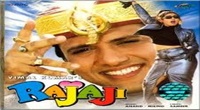
Paisa Ya Pyar Full HD Movie Download
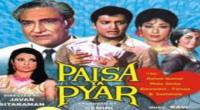
Kaaboo Full HD Movie Download

Ankahee (1985) Full HD Movie Download
.jpg)
Nasha Jism Ka Full HD Movie Download

Haage Summane Full HD Movie Download

Adade Aadram Full HD Movie Download
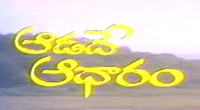
Yamapasam Full HD Movie Download
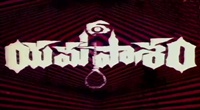
Karma Police Full HD Movie Download
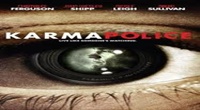
Badle Ki Jwala Full HD Movie Download

Jigar Baaz Full HD Movie Download

Ayiram Poi Full HD Movie Download
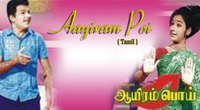
Iru Medaigal Full HD Movie Download
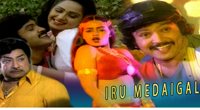
Gandhinagar Rendava Veedhi Full HD Movie Download

Dhanush Full HD Movie Download
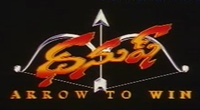
Aadavallu Aligithe Full HD Movie Download
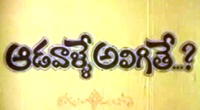
Marana Homam Full HD Movie Download

Mere Yaar Ki Shaadi Hai Full HD Movie Download

Download latest Movie from bollywood
- 1> baaghi 3
- 2> THE SKY IS PINK MOVIE FULL STORY AND REVIEW
- 3> Luka Chuppi
- 4> TO ALL THE BOYS I’VE LOVED BEFORE
- 5> Kabir Singh
- 6> Street Dancer 3D
- 7> Simmba
- 8> Gone Girl
- 9> The Girl Who Lived
- 10> Ludo
- 11> DILWALE DULHANIA LE JAYENGE
- 12> GUILTY
- 13> The Godfather
- 14> Adventures of Rusty
- 15> Sooryavanshi
- 16> Satyameva Jayate 2
- 17> Thappad
- 18> Bhool Bhulaiyaa 2
- 19> KGFChapter 2
- 20> Mardaani 2
- 21> Pinjar
- 22> Shivaji maharaj
- 23> Ek Villian 2
- 24> Hungama 2
- 25> Divergent
- 26> Mumbai Saga
- 27> The Internship
- 28> HIT (telugu)
- 29> Panga
- 30> The perfect date
- 31> 16 December
- 32> Gopala Gopala (Telugu)
- 33> Brahmastra
- 34> Gangubai Kathiawadi
- 35> Manmadhudu
- 36> Nenu local
- 37> Mahanati
- 38> Shatamanam bavathi
- 39> Lagaan
- 40> After
- 41> MOM
- 42> Shamshera
- 43> Raguvaran BTech
- 44> Khakee
- 45> The villain
- 46> OM
- 47> Mr. perfect
- 48> Bueatifull mind
- 49> Hichki
- 50> Gabbar Singh
- 51> Jogi
- 52> Before Sunrise
- 53> Before Sunset
- 54> Before Midnight
- 55> The Big Bull
- 56> Top Gun: Maverick
- 57> The Purge
- 58> The Sky is Pink
- 59> Laxmmi Bomb
- 60> Sadak 2
- 61> Sufna
- 62> Prithviraj
- 63> PK
- 64> Coolie No 1(2020)
- 65> Black Widow
- 66> Dear Zindagi
- 67> Dil Bechara
- 68> PHIR HERA PHERI
- 69> WAR
- 70> Dostana
- 71> RRR: Roudram Ranam Rudhiram
- 72> Maidan
- 73> Dabbang 3
- 74> Chhalaang
- 75> life as we know it
- 76> SherShaah
- 77> Sandeep Aur Pinky Faraar
- 78> Event Horizon
- 79> 83
- 80> Radhe: Your Most Wanted Bhai
- 81> Gunjan Saxena: The Kargil Girl
- 82> Mr India
- 83> Vivah
- 84> Anokha Bandhan
- 85> Ghost
- 86> Bhoot: Part One - The Haunted Ship
- 87> Haseen Dilruba
- 88> Laal Singh Chaddha
- 89> Qismat
- 90> Rajput
- 91> Drive
- 92> Dil Chahta Hai
- 93> Dil Ki Baazi
- 94> Dil Ka Rishta
- 95> Teesri Manzil
- 96> Dil
- 97> Love Aaj Kal
- 98> Khaali Peeli
- 99> Bunty Aur Babli 2
- 100> Atrangi Re
- 101> Gulabo Sitabo
- 102> Jodi
- 103> Suraj Pe Mangal Bhari
- 104> Deewana
- 105> Attack
- 106> Sardar Udham Singh
- 107> Toofan
- 108> THE LOVEBIRDS
- 109> Jersey
- 110> Ginny Weds Sunny
- 111> Thalaivi
- 112> Shiddat
- 113> Angels vs Zombies
- 114> Koi Mil Gya
- 115> Thank God
- 116> Bhuj: The Pride of India
- 117> Hum Aapke Hain Kaun
- 118> The Platform
- 119> Bird Box
- 120> Roohi Afzana
- 121> Torbaaz
- 122> Nikamma
- 123> World War Z
- 124> Extraction
- 125> Train to Busan
- 126> Life of Pi
- 127> SHAADI MEIN JROOR AANA
- 128> Himmat Aur Mehnat
- 129> To All The Boys: P.S. I Still Love You
- 130> Mimi
- 131> Good Newwz
- 132> Shubh Mangal Zyada Saavdhan
- 133> Raabta
- 134> Harry Potter and the Philosopher's Stone
- 135> Harry Potter and the Chamber of Secrets
- 136> Chhapaak
- 137> War of the Worlds
- 138> Harry Potter and the Prisoner of Azkaban
- 139> Harry Potter and the Goblet of Fire
- 140> MURDER MYSTERY
- 141> Shakuntala Devi
- 142> Bachchan Pandey
- 143> Jayeshbhai Jordar
- 144> Sheer Qorma
- 145> Saina
- 146> 'O' Pushpa I hate tears
- 147> Kedarnath
- 148> MS Dhoni The Untold Story
- 149> Chhichhore
- 150> Badhaai Ho
- 151> Unstoppable
- 152> Oz the Great And Powerful
- 153> The Girl on the Train
- 154> Haathi Mere Saathi 2020
- 155> The Conjuring: The Devil Made Me Do It
- 156> Gandhi Se Pehle Gandhi
- 157> The Song of Scorpions
- 158> Srimanthudu
- 159> Hello Guru Prema Kosame
- 160> Beauty and The Beast
- 161> Black Panther
- 162> Charlie and the Chocolate Factory
- 163> Bole Chudiyan
- 164> Fidaa
- 165> Duvvada Jagannadham
- 166> Bruce Lee: The Fighter
- 167> Hyper
- 168> Yaara
- 169> Red (2020)
- 170> Shivam
- 171> That Is Mahalakshmi
- 172> Nishabdham
- 173> Aashram 2020 web series
- 174> Laxmii
- 175> Mismatched
- 176> STUDENT OF THE YEAR 2
- 177> NAIL POLISH
- 178> Ramprasad Ki Tehrvi
- 179> KAAGAZ
- 180> 12 o Clock
- 181> The Power
- 182> bolo hau
- 183> Tribhanga
- 184> JAMUN
- 185> Madam Chief Minister
- 186> Maasaab
- 187> Aadhaar
- 188> Tanhaji
- 189> Bhaagi 3
- 190> Bhootnath
- 191> MALANG
- 192> Jai Mummy Di
- 193> Haathi Mere Saathi 2021
- 194> Shakeela
- 195> Unpaused
- 196> Annayya
- 197> Vamsoddharakudu
- 198> Mrugaraju
- 199> Narasimha Naidu
- 200> Sankranti
- 201> Manasu Maata Vinadhu
- 202> Anjaane
- 203> Apaharan
- 204> Bachke Rehna Re Baba
- 205> Bewafaa
- 206> Roohi
- 207> Radhe
- 208> Zindagi Khoobsoorat Hai
- 209> Yeh Mohabbat Hai
- 210> Yeh Kya Ho Raha Hai?
- 211> The Tomorrow War
- 212> DehradunDiary
- 213> Meri Shaadi Karaoo
- 214> Matruu Ki Bijlee Ka Mandola
- 215> No One Killed Jesica
- 216> Aag Ka Goola
- 217> Eight Million Dollars
- 218> Three Hundred
- 219> Cats and Dog
- 220> Decoy
- 221> Gold Rush
- 222> You Have Got Mail
- 223> Final Destination three
- 224> Tofan
- 225> Jungle
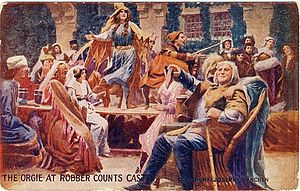 Story of movie The Miracle 1912 Film :
Story of movie The Miracle 1912 Film : 